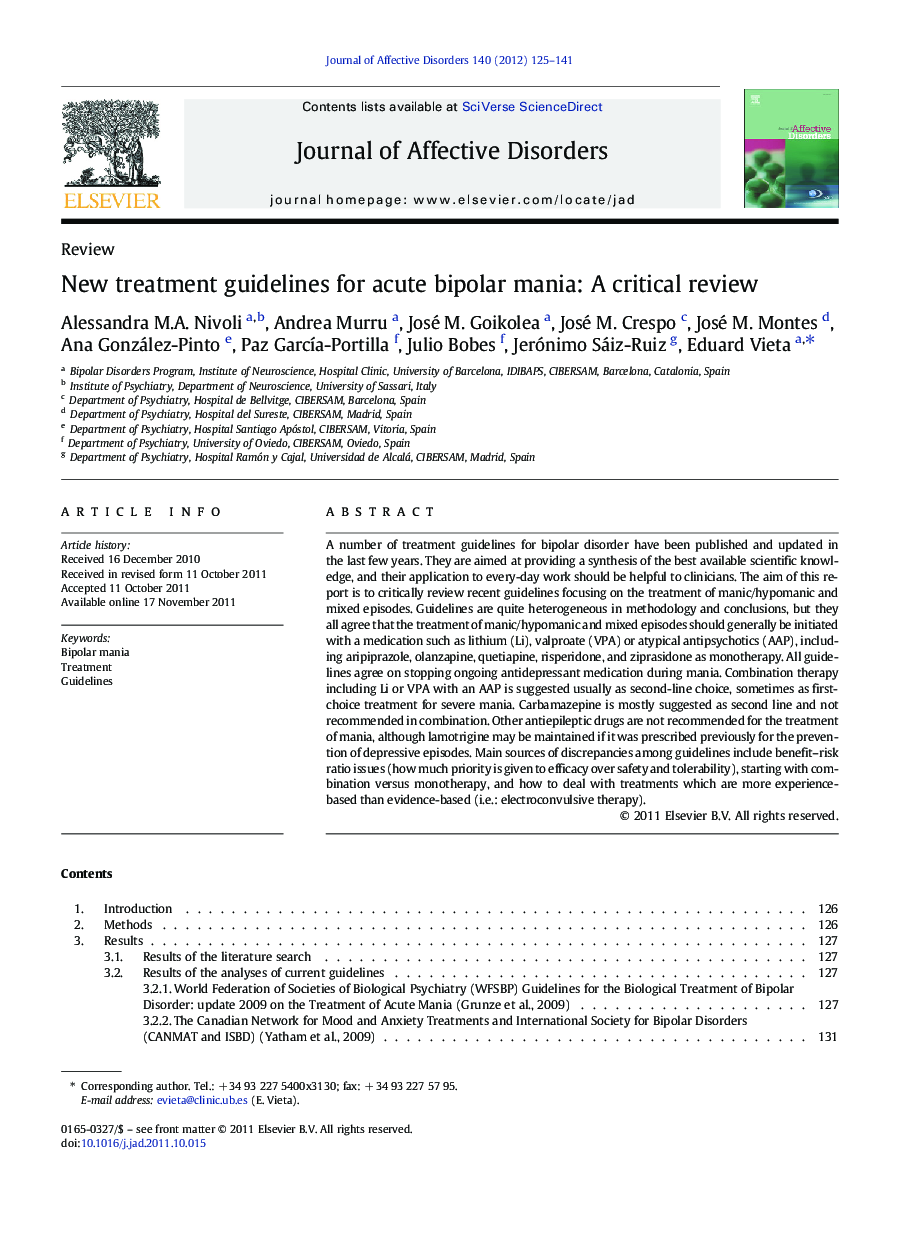| Article ID | Journal | Published Year | Pages | File Type |
|---|---|---|---|---|
| 4186369 | Journal of Affective Disorders | 2012 | 17 Pages |
A number of treatment guidelines for bipolar disorder have been published and updated in the last few years. They are aimed at providing a synthesis of the best available scientific knowledge, and their application to every-day work should be helpful to clinicians. The aim of this report is to critically review recent guidelines focusing on the treatment of manic/hypomanic and mixed episodes. Guidelines are quite heterogeneous in methodology and conclusions, but they all agree that the treatment of manic/hypomanic and mixed episodes should generally be initiated with a medication such as lithium (Li), valproate (VPA) or atypical antipsychotics (AAP), including aripiprazole, olanzapine, quetiapine, risperidone, and ziprasidone as monotherapy. All guidelines agree on stopping ongoing antidepressant medication during mania. Combination therapy including Li or VPA with an AAP is suggested usually as second-line choice, sometimes as first-choice treatment for severe mania. Carbamazepine is mostly suggested as second line and not recommended in combination. Other antiepileptic drugs are not recommended for the treatment of mania, although lamotrigine may be maintained if it was prescribed previously for the prevention of depressive episodes. Main sources of discrepancies among guidelines include benefit–risk ratio issues (how much priority is given to efficacy over safety and tolerability), starting with combination versus monotherapy, and how to deal with treatments which are more experience-based than evidence-based (i.e.: electroconvulsive therapy).
